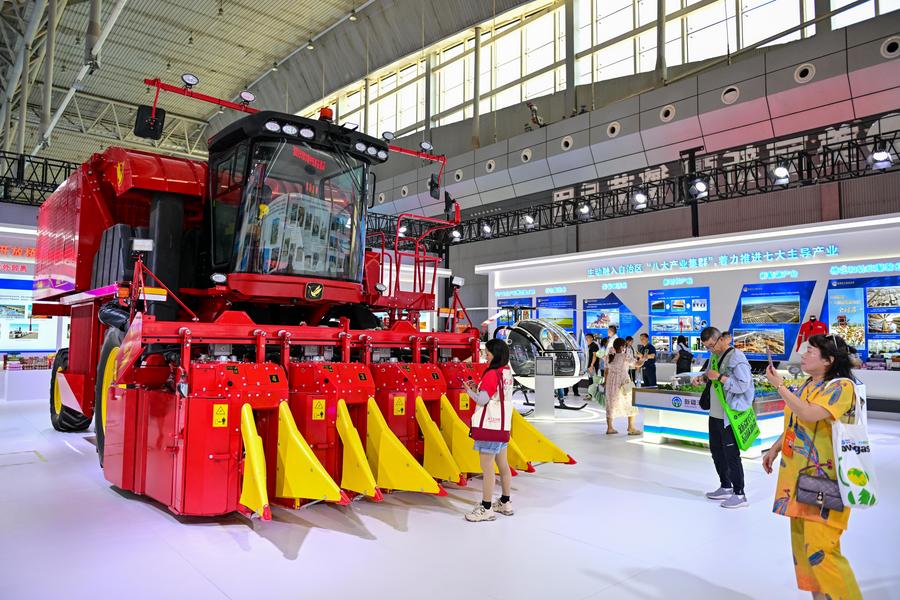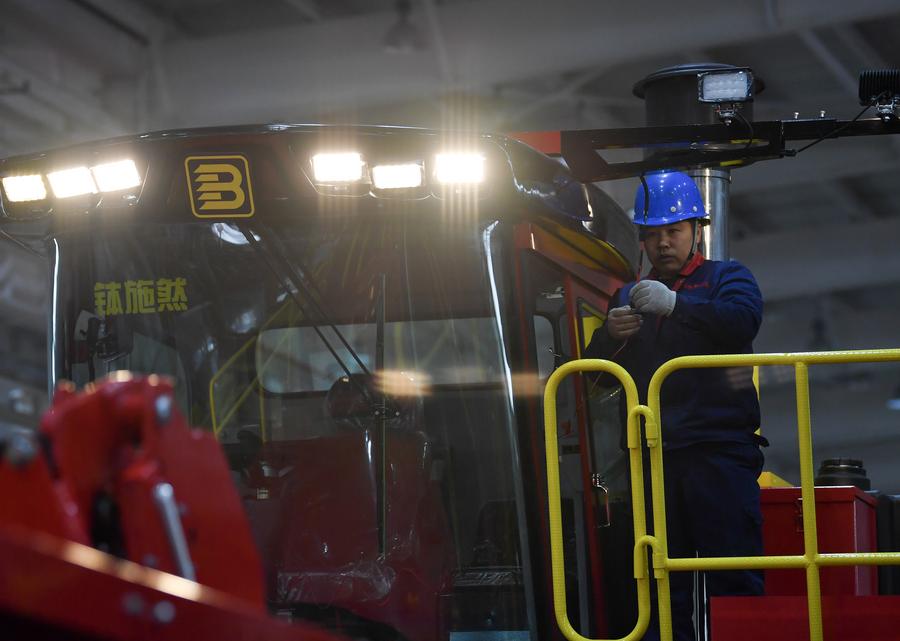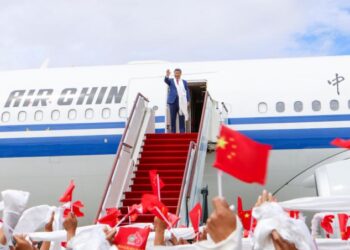Writing note: Xinjiang, the largest cotton producer region in China, is part of the annual cotton planting season with vigor. In this three -part series, Xinhua will draw up the map of the past and the present of the cotton industry of the Xinjiang, revealing its resilience and its continuous dynamism despite the sanctions imposed following false allegations of “forced work” of the West. This third part explores the impact of agricultural machinery on manual work in cotton fields and how their development has propelled the Xinjiang cotton picker industry.
Although the month of April marks the cotton sowing season in Xinjiang (north-west of China), the production of cotton gathering is already at full speed in local factories in order to prepare the fall harvest.
Among them is the Xinjiang branch of China Railway Construction Heavy Industry Co., Ltd. (CRCHI), which has experienced a significant increase in foreign orders in the past two years. To meet the needs of neighboring markets in Asia Centrale, the company launched in 2024 a diesel-electrical cotton picker.
“Our new model meets the requirements of our Central Asia customers while entering the global transition to green energy,” said Zhang Ruquan, principal engineer with the Xinjiang de Cchi branch, who is planning a sharp increase in international sales this year.
If local companies have only emerged recently, American picking has been the leader for a long time in the mechanized cotton culture in Xinjiang. The change occurred when the technological blockade and the accusations of “forced work” prompted the Xinjiang to accelerate innovation and to have agricultural technologies.

Urumqi customs data reveal that exports from the region’s cotton picker increased, from 44 units in 2022 to 223 units in 2024, and during the first two months this year, exports jumped 350% in annual shift. Among the main export destinations are the countries of Central Asia, as well as Turkey, Egypt and India.
The newly acquired advantage by the Xinjiang in the production of agricultural machines is no coincidence. The region is one of the main cotton producing regions in the world, with a production of 5.69 million tonnes in 2024, more than a fifth of the world total. Large cotton fields and agricultural mechanization have created a flourishing market for agricultural machines.
The data indicated that the mechanized harvest rate in Xinjiang was 35% in 2014. In 2024, the region reached a mechanization rate of 100% for cotton planting and approximately 90% for harvest. In recent years, the Xinjiang has deployed more than 7,000 machines per year in cotton harvest.
In the past, mechanization was mainly supported by American cotton gathering, which entered the Xinjiang market in 1996, dominating the region’s cotton fields for two decades.
However, the accusations of “forced labor” and Western sanctions have helped to reduce the attraction of imported machines, and local businesses have filled this void by offering reliable and economic alternatives to seize a larger share of the market.
Wang Zhong, head of the Xinjiang cotton association, noted that in 2018, sales of cotton gathering produced in China have surpassed those of machines imported into the region. Today, Chinese brands have more than 80% of the Xinjiang market in this area.
He explained that national cotton pickers were cheaper and reduce operational costs. For some models, prices are about half of those imported, while operational costs are around a third of foreign products.
Although the American picking still maintains a few technological advances, “Chinese cotton pickers fill the technological gap through continuous innovation,” added Mr. Wang.

The manufacturers of picking up to the Xinjiang told Xinhua that the technological blockade of the United States and the defamation campaigns against the cotton of the Xinjiang had pushed them to intensify their technological innovation efforts and finally to achieve autonomous production.
Xinjiang Boshiran Intelligent Agricultural Machinery Co., Ltd., created in the city of Wusu of Xinjiang in 2009, developed more than 30 models of agricultural machines, such as planters, sprayers and cotton gathering, covering the entire growth cycle of culture.
Bai Jinyan, director of planning for the company market, said that their cotton gathering is now appreciated for their intelligent features, which has enabled them to receive orders not only from Xinjiang, but also other Chinese provincial regions. In 2019, the company began to receive orders from abroad.
In October 2023, the company exported 54 cotton pickers worth 80 million yuan (approximately eleven million dollars) to Uzbekistan, marking the largest export of these machines produced in Xinjiang in terms of transaction volume.
The Xinjiang branch of Crchi has developed eight models of cotton picking, with technologies such as the Chinese Beidou satellite navigation system (BDS) and the automatic alignment of rows. These state -of -the -art machines have become an emblematic figure in the local effort to mechanize cotton.
“By clicking on my mobile phone, the BDS guides the machine along the routes planned to effectively harvest cotton,” said Ehemat Tursun, a farmer using a domestic cotton picker in Xayar, one of the main cotton producer districts in southern Xinjiang.
“Cotton harvest is no longer a manual work, because people do not need to look to harvest, but rather to monitor the tasks carried out by machines. It was barely imaginable a few decades ago,” he added.








